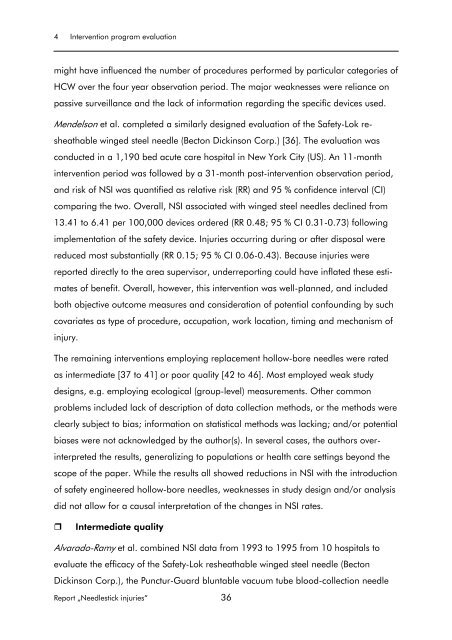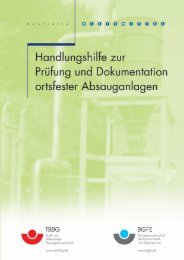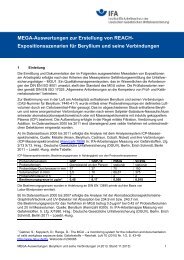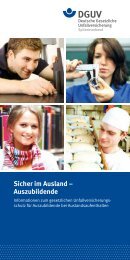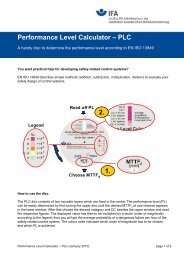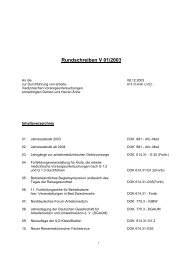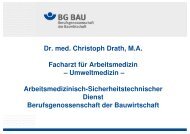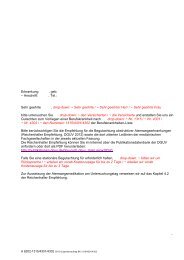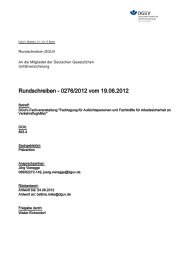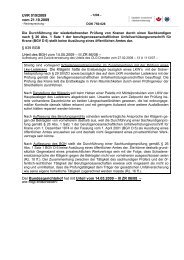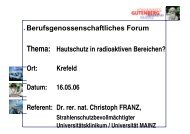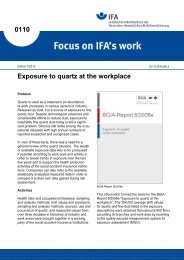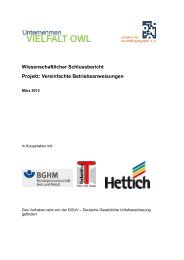Effectiveness of measures to prevent needlestick injuries among ...
Effectiveness of measures to prevent needlestick injuries among ...
Effectiveness of measures to prevent needlestick injuries among ...
You also want an ePaper? Increase the reach of your titles
YUMPU automatically turns print PDFs into web optimized ePapers that Google loves.
4 Intervention program evaluation<br />
might have influenced the number <strong>of</strong> procedures performed by particular categories <strong>of</strong><br />
HCW over the four year observation period. The major weaknesses were reliance on<br />
passive surveillance and the lack <strong>of</strong> information regarding the specific devices used.<br />
Mendelson et al. completed a similarly designed evaluation <strong>of</strong> the Safety-Lok re-<br />
sheathable winged steel needle (Bec<strong>to</strong>n Dickinson Corp.) [36]. The evaluation was<br />
conducted in a 1,190 bed acute care hospital in New York City (US). An 11-month<br />
intervention period was followed by a 31-month post-intervention observation period,<br />
and risk <strong>of</strong> NSI was quantified as relative risk (RR) and 95 % confidence interval (CI)<br />
comparing the two. Overall, NSI associated with winged steel needles declined from<br />
13.41 <strong>to</strong> 6.41 per 100,000 devices ordered (RR 0.48; 95 % CI 0.31-0.73) following<br />
implementation <strong>of</strong> the safety device. Injuries occurring during or after disposal were<br />
reduced most substantially (RR 0.15; 95 % CI 0.06-0.43). Because <strong>injuries</strong> were<br />
reported directly <strong>to</strong> the area supervisor, underreporting could have inflated these esti-<br />
mates <strong>of</strong> benefit. Overall, however, this intervention was well-planned, and included<br />
both objective outcome <strong>measures</strong> and consideration <strong>of</strong> potential confounding by such<br />
covariates as type <strong>of</strong> procedure, occupation, work location, timing and mechanism <strong>of</strong><br />
injury.<br />
The remaining interventions employing replacement hollow-bore needles were rated<br />
as intermediate [37 <strong>to</strong> 41] or poor quality [42 <strong>to</strong> 46]. Most employed weak study<br />
designs, e.g. employing ecological (group-level) measurements. Other common<br />
problems included lack <strong>of</strong> description <strong>of</strong> data collection methods, or the methods were<br />
clearly subject <strong>to</strong> bias; information on statistical methods was lacking; and/or potential<br />
biases were not acknowledged by the author(s). In several cases, the authors over-<br />
interpreted the results, generalizing <strong>to</strong> populations or health care settings beyond the<br />
scope <strong>of</strong> the paper. While the results all showed reductions in NSI with the introduction<br />
<strong>of</strong> safety engineered hollow-bore needles, weaknesses in study design and/or analysis<br />
did not allow for a causal interpretation <strong>of</strong> the changes in NSI rates.<br />
� Intermediate quality<br />
Alvarado-Ramy et al. combined NSI data from 1993 <strong>to</strong> 1995 from 10 hospitals <strong>to</strong><br />
evaluate the efficacy <strong>of</strong> the Safety-Lok resheathable winged steel needle (Bec<strong>to</strong>n<br />
Dickinson Corp.), the Punctur-Guard bluntable vacuum tube blood-collection needle<br />
Report „Needlestick <strong>injuries</strong>“ 36


